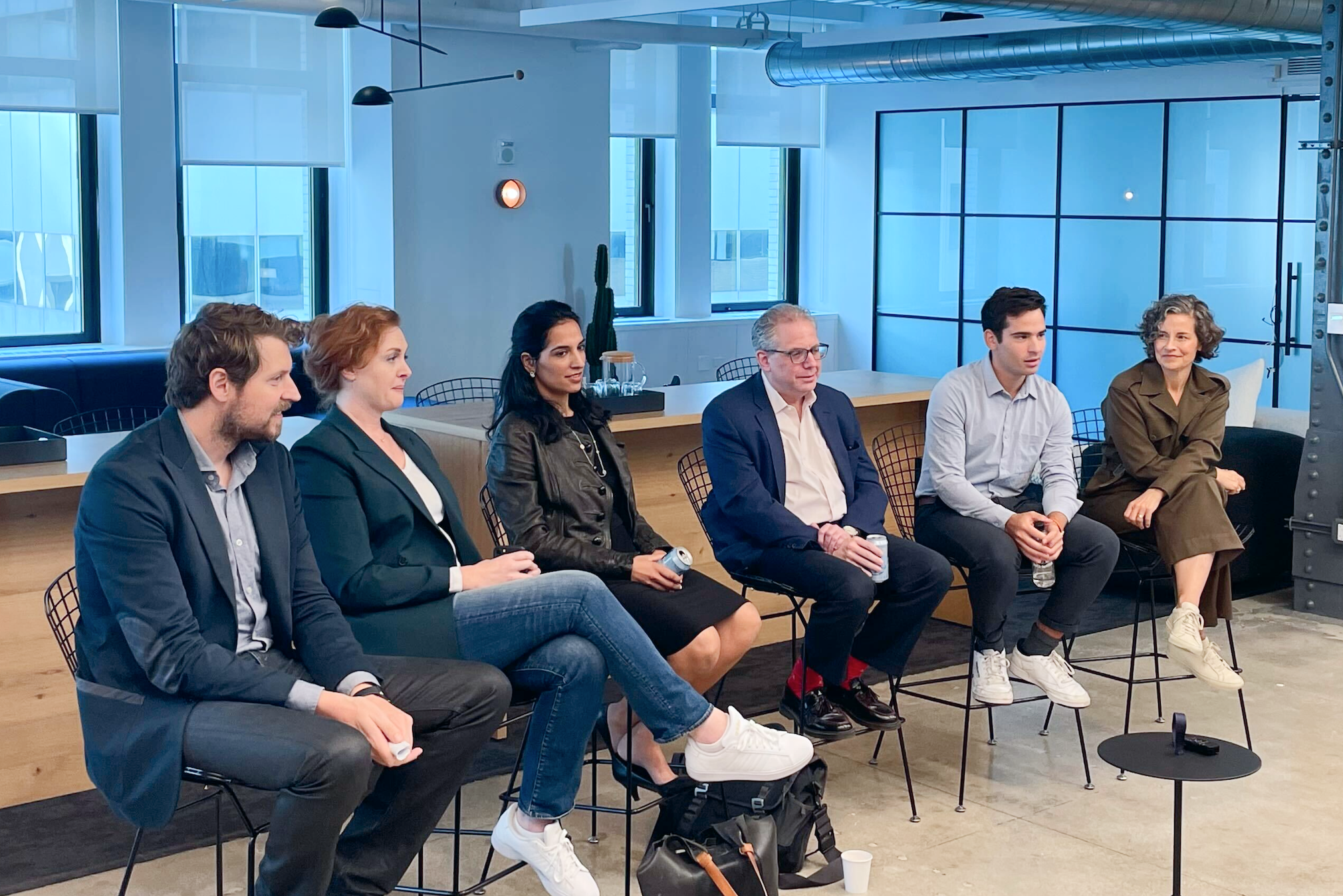Top takeaways from a panel discussion with industry leaders.
Last month, Luminary Labs hosted a private panel discussion in New York. A delegation of German healthcare leaders listened in as Luminary Labs CEO Sara Holoubek and Future of Health Director Ben Alsdurf moderated a conversation with E Squared Capital’s Les Funtleyder, Sleuth’s Sehreen Noor Ali, AvoMD’s Laurence Coman, and former Bayer Chief Digital Officer Jessica Federer.
As part of a U.S. tour, the German Managed Care Association (BMC e.V.) delegation was seeking inspiration and ideas from New York’s health tech scene. But the Americans in the room were just as eager to learn from what Europeans are doing. After all, universal healthcare can make interoperability and reimbursement — two nagging pain points in the U.S. — less of an obstacle to innovation.
Event attendees from both continents had the same overall question: What’s the pulse in health tech? We came away from the conversation with four top takeaways.
Systemic change is key to sustainable innovation.
During the depths of the COVID-19 pandemic, payers and regulators changed rules and eliminated barriers to experimentation. There was little risk to trying new things. But now that the world is snapping back to “normal,” new behaviors and technologies aren’t sticking. Telehealth is a vivid example: In 2020 and into 2021, telehealth visits skyrocketed, but have since plummeted. Sustainable health tech innovation will require systemic change, with long-term commitments to make investments over time.
To change the flow of innovation, change the flow of money.
Startups struggle to sell into providers, partly because the people who actually deliver care lack resources. Providers don’t have the money to spend on innovation. (And after two years on the front lines of a global pandemic, provider burnout and labor shortages are also a critical resource issue.) The healthcare players that invest the most in innovation are the ones that have money to invest. If we want to see more innovation from providers, we will have to change the flow of money in the industry. That could take the form of innovation partnerships between providers and well-funded healthcare stakeholders to address the needs of care delivery; it could also mean supporting the scale of innovation with pooled capital from integrated delivery networks (IDNs).
If payers, policymakers, and providers aren’t driving innovation, what about big tech?
Consolidation will continue, and technology has a place in the health ecosystem. But investors aren’t necessarily placing bets on big tech to produce a single “winner” that will solve healthcare’s biggest problems. Some of America’s biggest businesses have made health tech headlines recently. Amazon is acquiring One Medical and partnering with Headspace Health subsidiary Ginger; Walmart is partnering with UnitedHealth Group; CVS is buying Signify Health. But Haven, Amazon’s attempt to transform healthcare, has flopped, its 2018 PillPack acquisition didn’t disrupt prescriptions, and the tech giant plans to shut down its telehealth venture later this year.
In the search for a big win, acquisitions and failures will continue. It’s fair to expect more consolidation, but unless big tech is willing to tackle lingering systemic problems, it’s hard to see how these moves will result in significant changes. Trust, of course, is also an issue: Who do you trust more, pharma or big tech? The answer sometimes varies by country. And perhaps because of the pandemic, pharma’s reputation is gaining as tech loses ground.
Where there’s friction, there’s opportunity.
Whenever there are problems, there are startups looking to solve them. Dysfunction within a system can spur subsurface networks. Despite an internet full of advice and explainers, many people struggle to find the health information they need, but grassroots networks of patients, caregivers, and providers often fill the gaps. Despite new data-sharing rules, interoperability is still an issue, and some of the industry’s biggest players have been resistant to change — but startups see an opportunity to disrupt the electronic health records market. As long as there’s friction, there will be an opportunity for health tech solutions.




